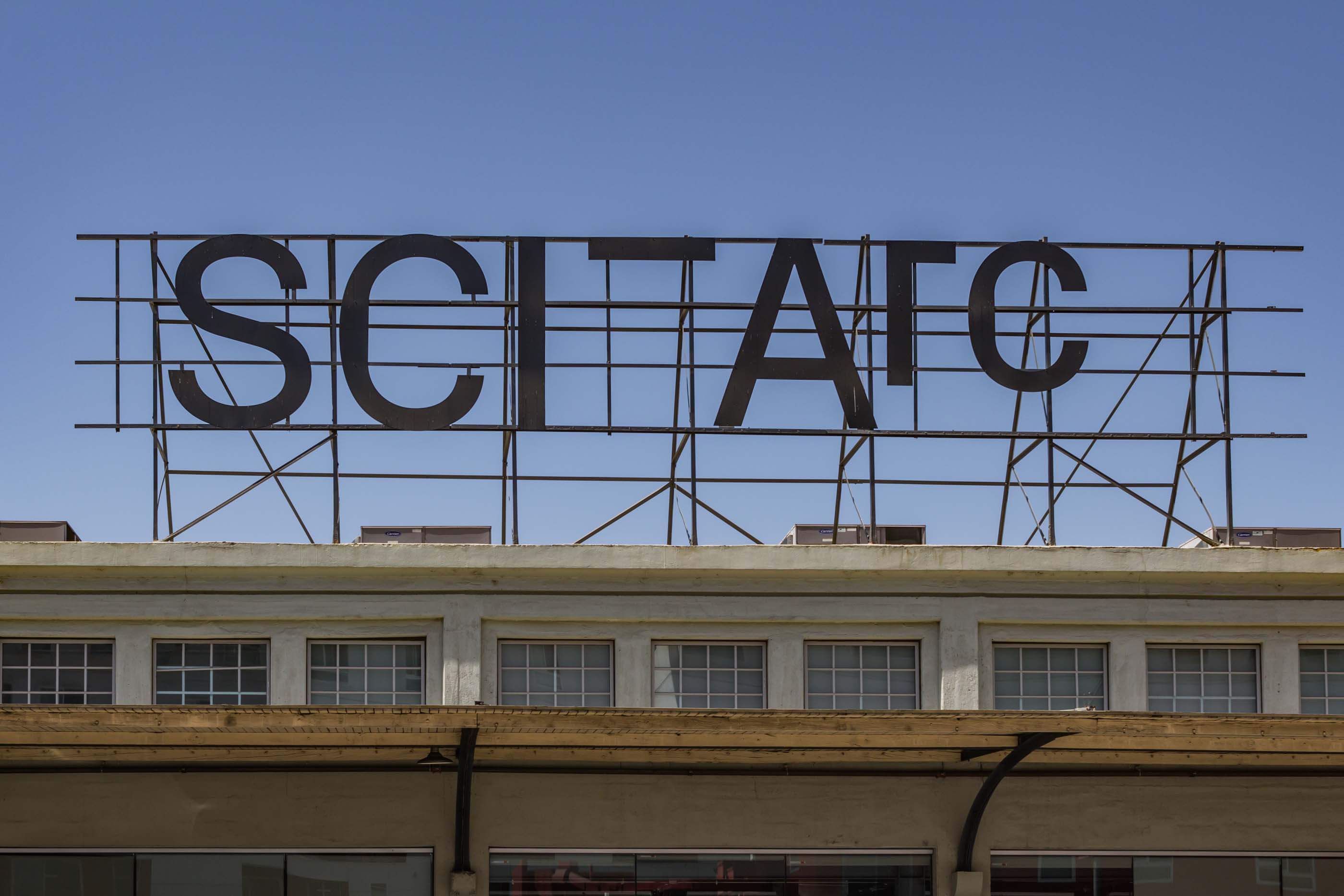Here are the polarizing and provocative controversies that defined 2022
As in years past, 2022 was marked by explosive controversies that made us think critically about systemic issues in professional practice, in architectural education, and in socioeconomic frameworks under which architects practice—and under which all of us live.
Without further ado, here the most polarizing and provocative stories of 2022:

A legal battle between Marlon Blackwell Architects and HBG Design will have lasting implications for architectural practice
In May, Bill Millard highlighted the challenges inherent in the collaboration between design architects and architects of record via a lawsuit between Marlon Blackwell Architects (MBA) and HBG Design.
Design architect MBA sued architect of record HBG Design, for copyright infringement, attribution, tortious interference, breach of contract, and unjust enrichment in the firms’ joint work on a tribal casino in Arkansas. (The case was settled out of court.) The partnerships between the design architect and the architect of record have substantial implications for the legal relations between design architects and architects of record, Millard argued. These partnerships occasionally fail, sometimes when design work proceeds based on informal agreements before the partners’ roles and scopes of work are formalized contractually.
To architect Phillip Bernstein, who teaches professional practice at Yale University and was previously chair of the AIA National Contract Documents Committee, the case evinced both “traditional sloppiness around the management of intellectual property and someone who was willing to defend his intellectual property.”

Architect of the Capitol accused of rampant ethical abuses in bombshell report
In another example of egregious conduct, a watchdog report released by the Office of the Inspector General (OIG) alleged the Architect of the Capitol (AOC) J. Brett Blanton and his family committed a slew of ethical violations, including offering unauthorized tours of the United States Capitol complex to “patriots” in the days leading up to the November 2020 election and commandeering government SUVs for vacations.
“The OIG identified a significant amount of administrative, ethical and policy violations as well as evidence of criminal violations throughout the investigation,” the report detailed. “Blanton misled and provided false information to investigators on multiple occasions. Blanton used taxpayer dollars to fund an additional personal vehicle for his family.”

A new generation of young architects is calling out exploitation in education and practice. Not everyone is happy with their methods.
In June a bombshell report lifted the lid on a “toxic culture” at the Bartlett Faculty of the Built Environment at University College London (UCL) stretching back decades.
The report found what it called “deeply concerning” allegations of racism, violence and bullying, and a “toxic culture” led by a group of senior staff. It claimed this “old boys club” wove unaccountability into the fabric of the school, and urged The Bartlett to review its unit structure and crit guidelines after students described having their work torn up and regularly being reduced to tears.
In response, leadership at the prestigious school has apologized for an “inexcusable and pernicious underbelly of bullying” and suspended several unnamed staff.

The hot mess at SCI-Arc
Similarly back in the U.S., students at SCI-Arc shared experiences they has at the school, particularly with Tom Wiscombe and Marrikka Trotter, that raised eyebrows across the architectural community.
Some students who worked for Wiscombe’s firm on a competition entry during the spring semester were asked to log 18-hour days with no lunch breaks. They quit en masse after Wiscombe instructed the students to deep-clean the studio, a task that was described as humiliating and not relevant to the educational aspects of the roles for which they were hired.
AN contacted individuals currently and formerly affiliated with SCI-Arc who are familiar with the situation at the studio. They stated that, during conversations with students before they resigned, Trotter allegedly intimated that students could ruin their professional reputations if they quit. They also noted that these and other internships with faculty functioned as quid-pro-quos for academic scholarships that were given based on the results of the internship experiences. Sometimes scholarships were revoked if a student declined to participate in an internship.
(The individuals AN spoke with emphasized that most instructors do not engage students as Wiscombe and Trotter did, but as the undergraduate chair and history and theory coordinator, respectively, Trotter and Wiscombe’s actions exert considerable influence over the academic environment at SCI-Arc.)
The revelations coincided with a faculty roundtable on professional practice that was widely criticized as tone-deaf, condescending towards students, and out of touch with demands from emerging practitioners for fairer working conditions and healthier work-life balance. Peggy Deamer followed up with a critique of both the content and the messages that were shared that day:
The first trope [of the roundtable]—well, barely a trope since it is just bad facts—concerns the “economic” advice offered by panelists Marrikka Trotter, Margaret Griffin, and Dwayne Oyler to students in attendance. It went like this: When entering the profession, labor abuse is to be expected! Buckle up, don’t whine, and get a second job if you need to. The reward is the work itself. Life and work must be the same thing, or you’re not really “an architect.” Questioned about this advice, the panelists resorted to a series of undigested sub-tropes that cast denial on problems present in architectural work. On the question of how to handle not making a living wage, Griffin offered a practical response (in essence, if money is an issue, simply exit the profession), while Trotter, horrified by the talk about money, emphasized the importance of creativity and clout-building. On the question of what makes a good worker, the panelists exchanged inanities about hustling (Oyler advised that “You’ve got to have a side hustle and a side hustle to that side hustle”), entrepreneurial self-promotion, and personal sacrifice. In sum, the message to students was to accept, and to enjoy, their helplessness in the face of economic precarity.
Days after the roundtable, students started a petition to remove Wiscombe and Trotter from their roles. Following an independent review and inquiry process executed by a third-party firm into the allegations from students regarding several SCI-Arc faculty members, Wiscombe and Trotter resigned as faculty at the school. Amid their resignations, SCI-Arc leadership outlined policy changes it plans to implement, including a working group that will recommend improvements to the internship and scholarship processes, among other reforms.

Recent academic departures offer lessons about how architectural education should change
The issues that came to light at SCI-Arc and The Bartlett were not unique to those institutions. In September Peggy Deamer highlighted the departure of three women deans at architecture schools in London and New York City and spelled out what their stories might mean for architectural education and the profession at large.
The three women deans who recently departed their posts are: Eva Franch i Gilabert of the Architectural Association (AA), Lesley Lokko of the Bernard and Anne Spitzer School of Architecture at the City College of New York (CCNY), and Harriet Harriss of the Pratt School of Architecture. Deamer argued that the three deans were set up to fail amid a profoundly flawed system of architectural education and that their untimely departures held a mirror up to sexism and other inequities in architecture schools:
The combined problem of corporate risk aversion [in architecture schools] and disciplinary insecurity yields an academic context particularly incapable of the change needed to address a built environment—and a discipline—in crisis. No wonder these three women “got it wrong”—the whole thing is wrong.

Why you can’t afford a home, and why you shouldn’t want one
The underlying factor driving high home prices is a supply crisis. There are simply not enough homes. In fact, the supply of homes is decreasing year after year, a major contributor to sky-high home prices that put ownership out of reach for many young people, especially.
The main cause of the shortfall is widely considered to be zoning restrictions, Jack Self argued in a September piece for AN. Government at all levels massively prefers single-family, low-density housing. However, it is impossible or impractical to increase this type of housing in line with general need. Preexisting factors restrict such supply from being built: environmental (floodplains, mountains, forests, etc.), spatial (proximity to dense metropolitan areas), and political (including racial and class segregation).
So why would the government insist on zoning rules it knows can’t produce desirable outcomes? Isn’t the task of the state to provide for its citizens? Surely governance doesn’t benefit from spiraling costs, housing shortages, overcrowding, and homelessness? This is where it gets sinister, Self says. Politicians and elected representatives across the country are under immense pressure to not just maintain home prices but ensure they go up. Two-thirds of almost any electorate have taken out a mortgage. This means that their home is both their greatest asset and their greatest liability. Self’s critique extends beyond individual homeowners to challenge the larger systems in which they operate.
Windowless dorm rooms are proliferating, exacerbating a growing student mental health crisis. They should be banned
A year after UC Santa Barbara revealed plans for a massive dorm with windowless bedrooms, it’s hard to believe that some universities, and the cities in which they’re located, permit these light-deprived living arrangements.
In October Juan Miró called out two UT dorms where a significant pluralirty of bedrooms lack windows. While some students may be content with this arrangement, the benefits of natural light on people’s general well-being—not to mention its preventive effects on such mental health conditions as depression, anxiety, sleep disorders, and stress—are well documented. Students may not be fully aware of the health ramifications when they sign leases for apartments with windowless rooms, Miró explained, but many have shared their “dreadful experiences” after the fact.
He called on architects to agitate for building code reforms at the local level that uphold the guiding principals of the profession. According to the AIA, these principals include “[designing] a healthier built environment” and “[considering] the physical, mental, and emotional effects a building has on its occupants and the surrounding community.”
The redevelopment of Penn Station and a new megadistrict in Midtown Manhattan
In the midst of other development initiatives, the redevelopment of the area around Penn Station into THE PENN DISTRICT is one of the most significant—and controversial—campaigns in New York City.
In October members of the grassroots organization Penn Community Defense Fund (PCDF) filed a lawsuit against the State of New York in New York State Supreme Court in Manhattan, claiming that the State’s environmental review for the Penn Station master plan was illegally “segmented” and that the State sidestepped the Uniform Land Use and Review Procedures by declaring the area around Penn Station “blighted.”
Grassroots and established organizations, as well as the area’s Community Board, are still awaiting information about the megadevelopment. Already, McKim Mead and White’s Hotel Pennsylvania is wrapped in scaffolding and set for demolition after Vornado first purchased the property in 1999. Meanwhile, Vornado has topped out on a new entrance to PENN 2, while also recladding the tower with new glazing. Foster + Partner’s PENN 15, set to rise almost 1,300 feet above the street, is next in line as part of Vornado’s 7.4 million-square-foot PENN DISTRICT master plan.


